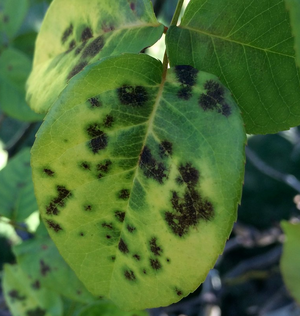Difference between revisions of "Rose Blackspot"
| Line 8: | Line 8: | ||
: '''Rose blackspot''' can lead to the [[leaf|leaves]] turning yellow and dying. | : '''Rose blackspot''' can lead to the [[leaf|leaves]] turning yellow and dying. | ||
: '''Rose blackspot''' can be transmitted by rain or wind carrying its [[spore]]s to a new location. | : '''Rose blackspot''' can be transmitted by rain or wind carrying its [[spore]]s to a new location. | ||
| + | |||
| + | ===References=== | ||
| + | ====Edexcel==== | ||
| + | :[https://www.amazon.co.uk/gp/product/1292120207/ref=as_li_tl?ie=UTF8&camp=1634&creative=6738&creativeASIN=1292120207&linkCode=as2&tag=nrjc-21&linkId=22455ff53961978667722edaa64c0be5 ''Blackspot fungus, page 186, GCSE Biology, Pearson, Edexcel ''] | ||
| + | :[https://www.amazon.co.uk/gp/product/1782948120/ref=as_li_tl?ie=UTF8&camp=1634&creative=6738&creativeASIN=1782948120&linkCode=as2&tag=nrjc-21&linkId=dedef775c6a43dbb0a609441525adac0 ''Blackspot fungus, page 308, GCSE Biology, CGP, Edexcel ''] | ||
Latest revision as of 14:30, 2 November 2019
Key Stage 4
Meaning
Rose blackspot is a disease caused by a pathogenic fungus which affects rose plants.
About Rose Blackspot
- Rose blackspot causes black spots to form on the leaves of rose plants.
- Rose blackspot can lead to the leaves turning yellow and dying.
- Rose blackspot can be transmitted by rain or wind carrying its spores to a new location.
